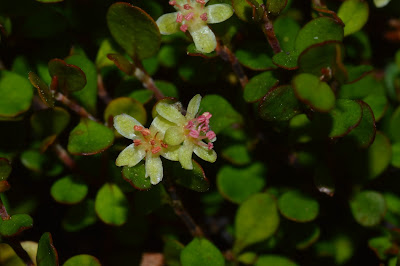Contact Form
Wednesday, September 28, 2016
Monday, September 19, 2016
No more impatiens!
That's it. I've had enough. Of the downy mildew, that is. That nasty fungus appeared in Europe more than 10 years ago, maybe even 20. Then it landed on our shores, and five or so years ago it hit hard here, usually doing its damage from early to mid-August. The leaves suddenly fall off, so the plants have to be pulled out. The photo shows most of a small planting wiped out, with only a bit on the right yet to succumb. It won't take long.So far, there is no cure, and I have not yet heard of any breeders trying to develop resistant varieties. In the meantime, I and many other gardeners will be switching to New Guinea impatiens. It's not perfect, as they require more sun, but it's better than what we have now. In parts of my garden, I switched to wax begonias, and that works fine. But the color selection is not nearly as wide.
Saturday, September 10, 2016
Making waves
In Japanese gardens, in Japan and around the world, there are often areas of raked gravel or sand. These represent the sea, and raking it is done to represent waves in the water. However, I have often seen raked patterns one would never see in water, such as checkerboard patterns.After every rain, I rake my "sea" to reestablish the "waves." I first water the pea gravel so the slopes maintain a steeper angle. Next, I rake the main areas with a rake I made out of plywood. Finally, I rake the areas around and between the boxwoods and rocks with smaller rakes.
The finished "sea" is most dramatic in the early morning when the shadows are the strongest.
Monday, September 5, 2016
Meuhlenbeckia, a neat plant
Meuhlenbeckia axillaris, or Wire Vine, is an alpine plant that is a great groundcover for a small area. In the first photo, it is the dark green triangular planting in the middle of the first level of the terraces in my front yard.It is very fine-textured, with tiny leaves, and it naturally mounds to form a pleasing appearance. It has an insignificant flower in early summer. Its main downside is that is appears dead-looking until late May, and it does not look its best until mid-June. It requires a sunny spot with well-drained soil.
I started this area with a single 4" pot bought at The Flower Factory near Stoughton, WI in 2007, constantly dividing it. As it spreads fairly rapidly, one must take care not to let it become invasive.
Subscribe to:
Posts (Atom)





































